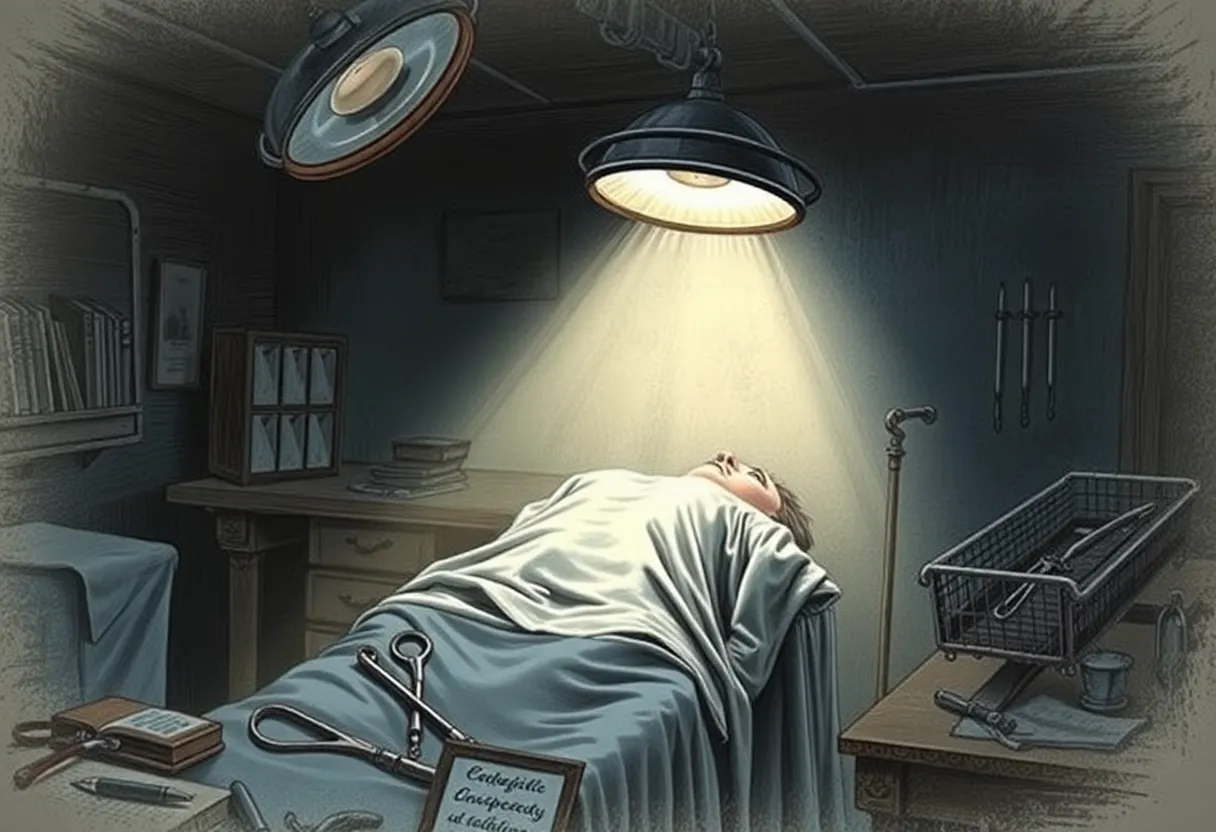News Summary
English novelist Frances Burney faced a harrowing mastectomy in 1811 after being diagnosed with breast cancer, enduring the procedure without anesthesia. Her experience highlights the medical practices of her time, showcasing the extreme pain faced by patients before the introduction of surgical anesthesia. Despite the ordeal, Burney survived for another 29 years, documenting her experience and contributing to literature, ultimately underscoring the significant advancements made in medical practices regarding pain relief.
Paris – In a remarkable and harrowing account of medical history, English novelist Frances Burney underwent a pioneering mastectomy in 1811 at the age of 59 after being diagnosed with breast cancer. The operation, conducted by French doctors, was deemed necessary as it was the only viable option to preserve her life. However, the procedure came at an unimaginable cost, as surgical anesthesia had not yet been developed, leaving Burney to confront the procedure without any pain relief.
Burney’s experience was marked by sheer dread as the date of her surgery approached. On the day of the operation, she was blindfolded and restrained by multiple assistants to prevent movement. Despite these precautions, the reality of the surgery was fraught with agony. During the operation, Burney endured excruciating pain and lost consciousness two times due to the intensity of her suffering.
Despite the horrific experience, the surgery was deemed a success, and Burney survived for another 29 years, continuing to contribute to literature. Her detailed descriptions of the procedure provide an insightful glimpse into the medical practices of the time, highlighting the anguish faced by patients a century before anesthesia became standard practice.
Historical Context of Anesthesia
The introduction of surgical anesthesia marked a revolutionary turning point in medical history. The first successful use of ether as an anesthetic occurred on October 16, 1846, by American doctors, and is acknowledged as a pivotal moment that would change the landscape of surgery permanently. Prior to this advancement, surgeries were considered only for life-threatening situations, and patients were forced to endure the agony of operations without any form of pain relief.
Throughout history, various cultures attempted to mitigate surgical pain through different remedies. Ancient civilizations utilized substances such as opium, herbal concoctions, and even hypnosis techniques to help patients cope with discomfort. Notably, the Persian physician Ibn Sina documented a method involving a “soporific sponge,” an herbal anesthesia technique designed to induce unconsciousness during procedures.
Medical Procedures Without Pain Relief
The early 19th century witnessed surgeons conducting operations with remarkable speed, often completing amputations in as little as 25 seconds due to the necessity of minimizing discomfort for the patient. Renowned surgeon Robert Liston, known for his rapid techniques, faced instances of mishaps during surgeries, including an incident resulting in accidental injuries to assistants, leading to severe complications and fatalities.
Even before the advent of ether-based anesthesia, attempts were made to explore alternatives such as mesmerism, a form of hypnosis that was seen as a potential solution for pain relief during surgical processes. However, none proved to be efficient until anesthesia was established as a routine practice in the mid-19th century.
The Transformation of Surgery
Frances Burney’s traumatic experience exemplifies the longstanding struggle against pain in medical practices prior to the introduction of modern anesthesia and germ theory. These advancements fundamentally transformed surgical methods, alleviating the distress experienced by patients and altering public perceptions around medical procedures.
The shift brought about by anesthesia not only revolutionized surgical techniques but also fostered a growing acceptance and trust in medical practices, marking a definitive progression in the history of medicine. The pain that patients like Burney endured is a testament to the resilience of those who experienced early surgery and the eventual triumph of modern medicine in overcoming the challenges of surgical pain.
Deeper Dive: News & Info About This Topic
HERE Resources
Additional Resources
- Baptist Press: Scopes Trial – A Defining Moment in U.S. History
- Wikipedia: Medical History
- KTVU: Video Report
- Google Search: Medical Advancements
- Billy Penn: Young People’s Continental Congress Philly 2025
- Google Scholar: Anesthesia History
- Vox: Disney’s America – A U.S. History Theme Park that Failed
- Encyclopedia Britannica: Anesthesia
- Washington Post: Largest U.S. Health Care Fraud Bust
- Google News: History of Surgery
Author: STAFF HERE CLEVELAND WRITER
The CLEVELAND STAFF WRITER represents the seasoned team at HERECleveland.com, your premier source for actionable local news and information in Cleveland, Cuyahoga County, and beyond, delivering "news you can use" with in-depth coverage of product reviews for personal and business needs, local business directories, politics, real estate trends, neighborhood insights, and state news impacting the region—backed by years of expert reporting and robust community input, including local press releases and business updates, while providing top reporting on high-profile events like the Rock and Roll Hall of Fame inductions, Cleveland International Film Festival, and holiday parades, alongside key organizations such as the Cleveland Clinic, Cleveland Orchestra, and Great Lakes Science Center, plus leading businesses in manufacturing and healthcare like Sherwin-Williams and University Hospitals, and as part of the broader HERE network including HEREDayton.com, offering comprehensive, credible insights into Ohio's vibrant landscape. HERE Cleveland HERE Dayton





